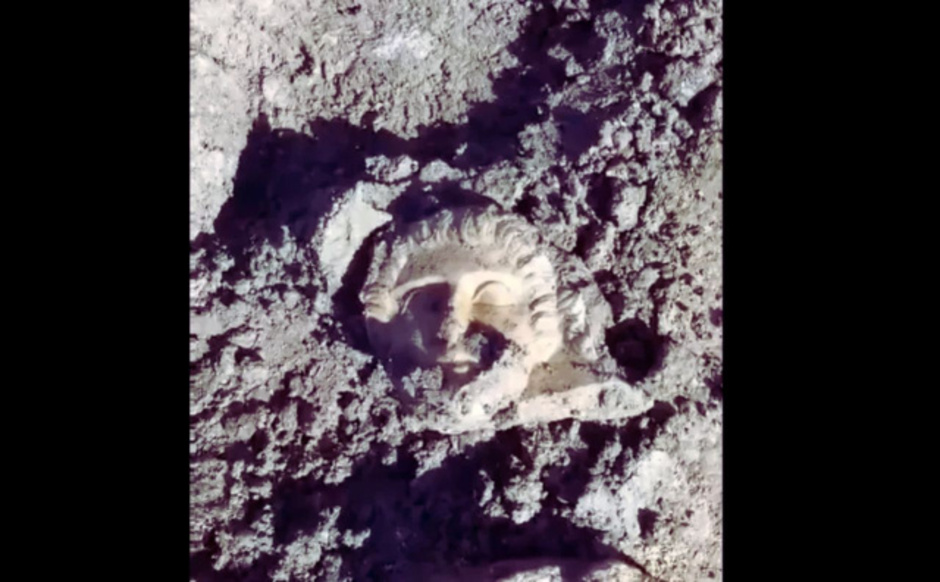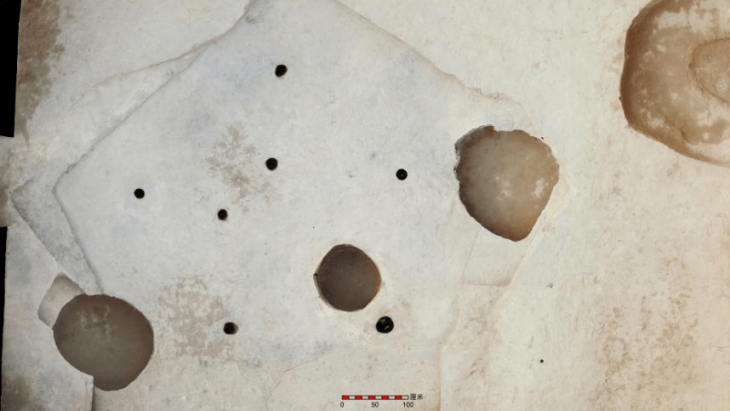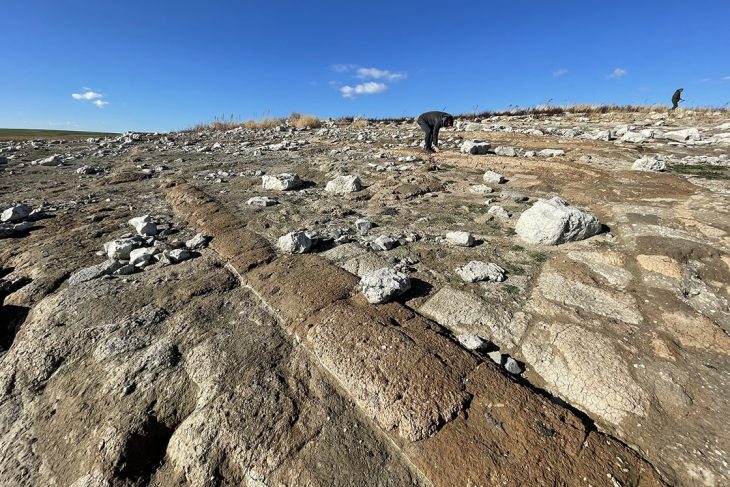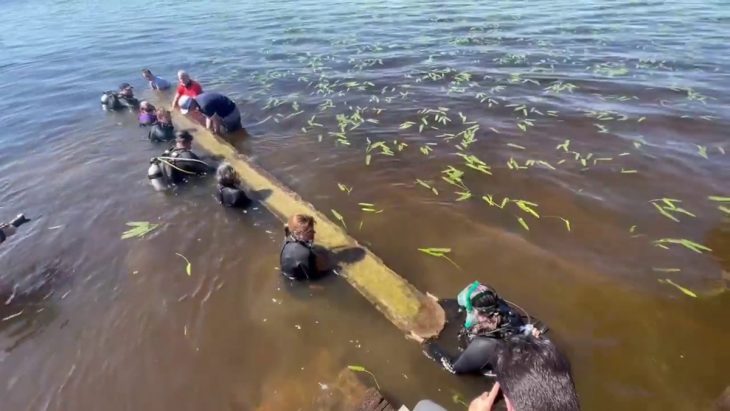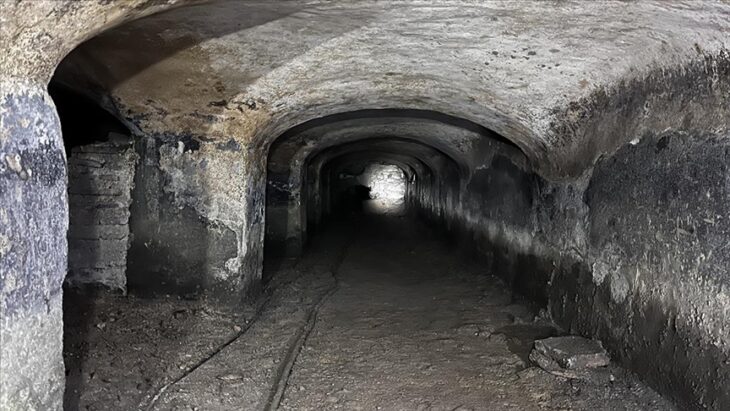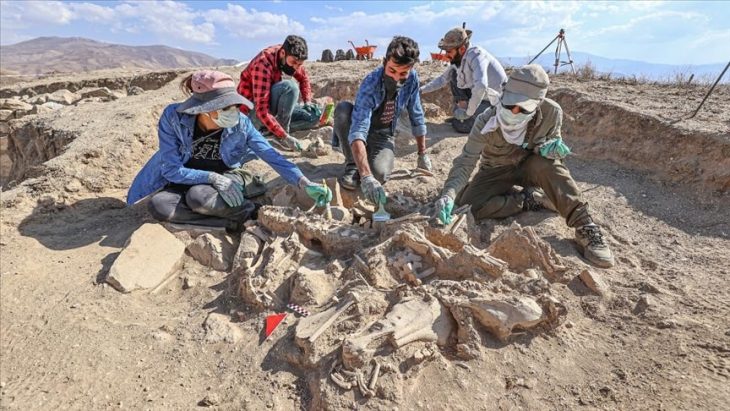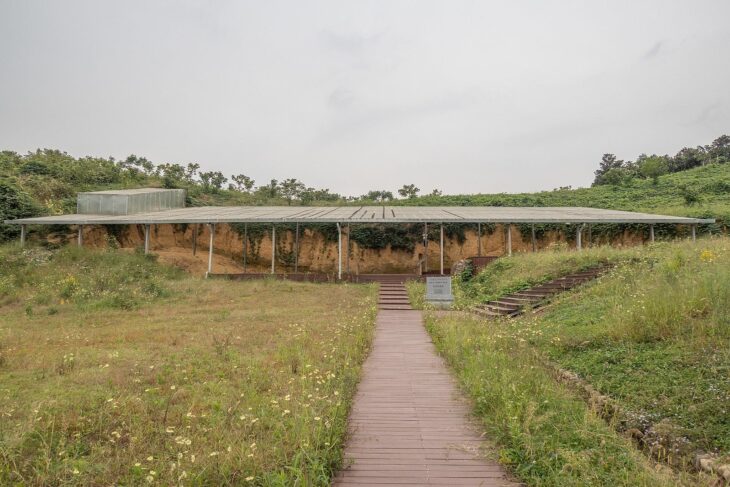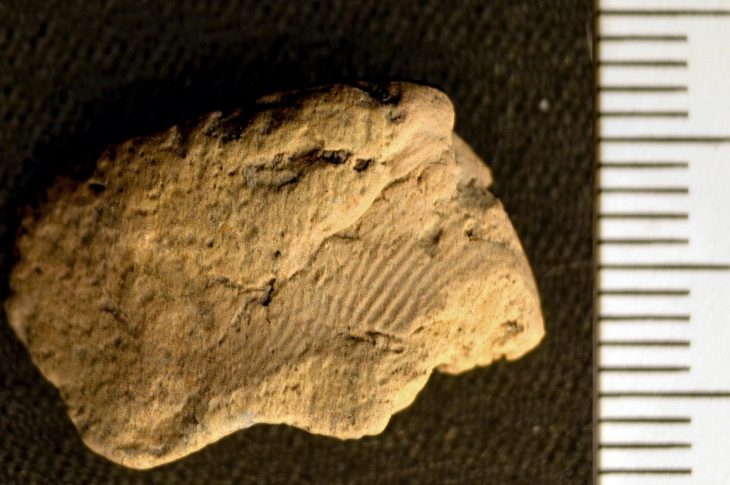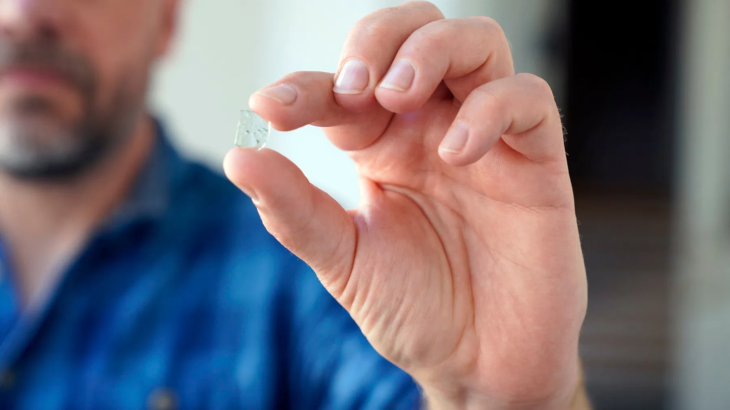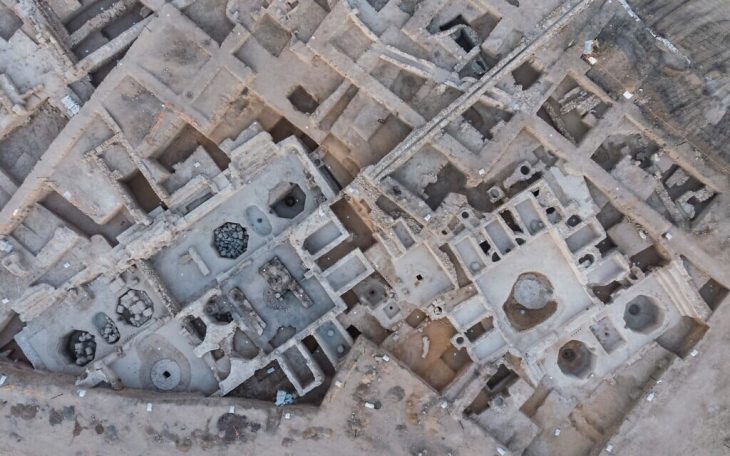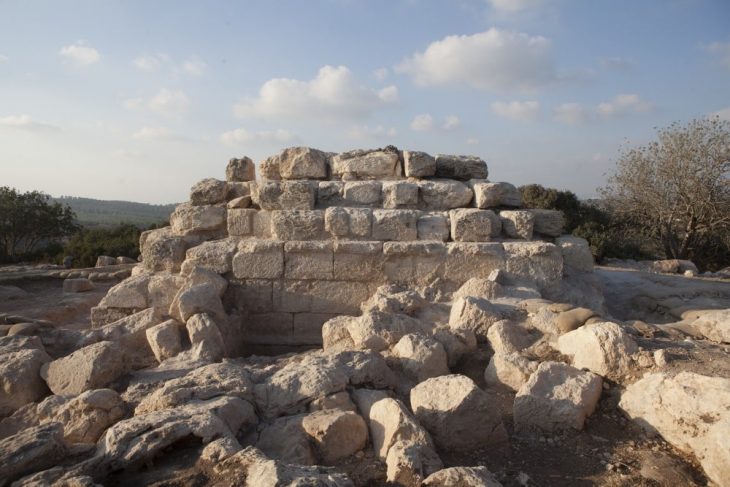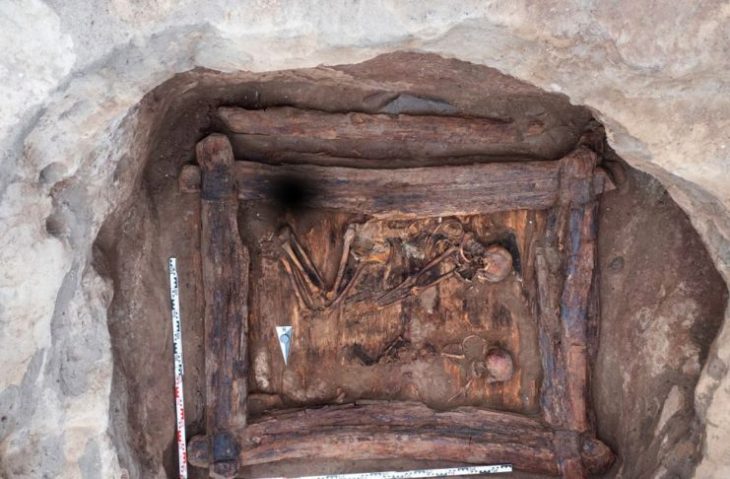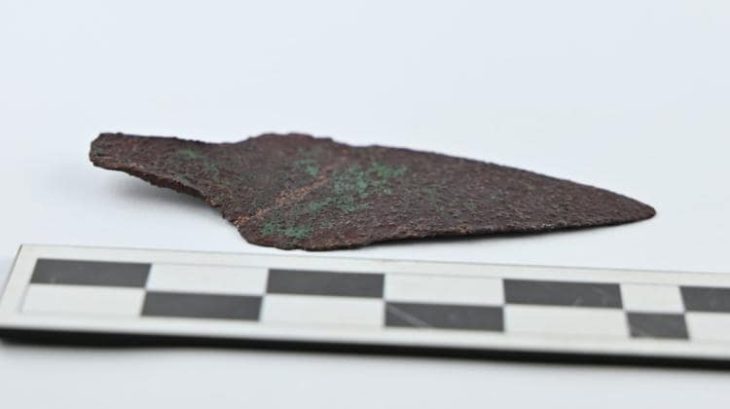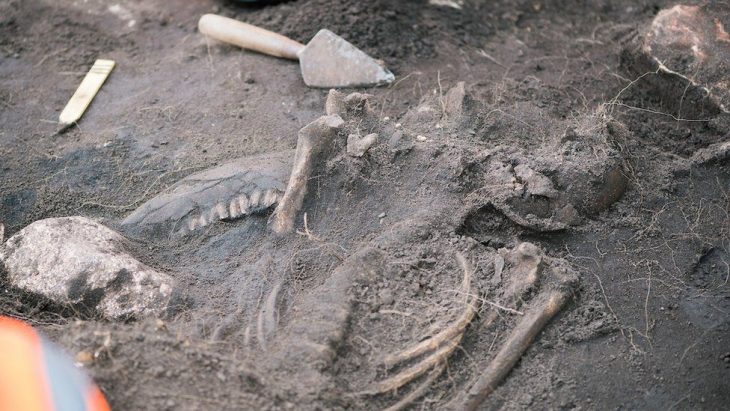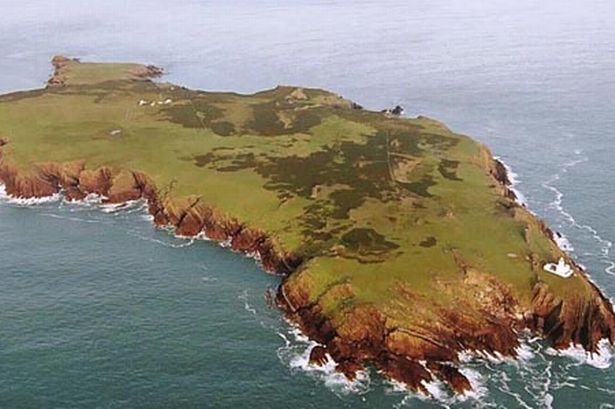Ongoing rescue excavations at the ancient Roman site of Heraclea Sintica in southwestern Bulgaria continue to deliver extraordinary finds, with recent discoveries spanning from the 2nd century BC to the 2nd century AD.
Archaeologists working along the route of a future Bulgaria–Greece gas pipeline have uncovered a finely carved marble face, a terracotta figurine of the Celtic goddess Epona, and an untouched grave containing seven well-preserved clay vessels. These discoveries come from the Western Necropolis of Heraclea Sintica, near the village of Rupite, where rescue excavations have intensified in recent months due to planned infrastructure development.
A Marble Portrait From Antiquity
In one of the most recent findings, a sculpted marble face was unearthed within a looted tomb. According to Prof. Dr. Lyudmil Vagalinski, director of the excavation team and representative of NAIM-BAS (National Archaeological Institute with Museum at the Bulgarian Academy of Sciences), the artifact likely formed part of a funerary relief depicting the deceased. It is believed to date back to the 1st or 2nd century AD, providing an exquisite example of Roman-period artistry.
The tomb lies nearly four meters below the modern surface, indicating the depth of the necropolis and its long-standing use. With archaeologists expecting further finds, the site continues to be a treasure trove for classical archaeology.
An Untouched Hellenistic Grave
Equally significant is the discovery from May 2025: an untouched grave carved into the rock, which yielded five bowls, a jug, and a clay lamp, all dating from the 2nd to 1st century BC. The exceptional preservation of these vessels offers invaluable insights into ancient burial rituals practiced before Roman dominance.
📣 Our WhatsApp channel is now LIVE! Stay up-to-date with the latest news and updates, just click here to follow us on WhatsApp and never miss a thing!!
Prof. Vagalinski emphasized the importance of the grave in understanding local funerary customs, describing it as a window into a rarely observed Hellenistic ritual tradition.
Goddess Figurines, Jewelry, and a Double Burial
Between these two headline discoveries, the necropolis has also revealed a terracotta figure of Celtic goddess Epona, a clay toy, gold jewelry, and a richly adorned double burial of a man and a woman. These finds, dating across several centuries, indicate a prolonged and culturally layered use of the burial ground.
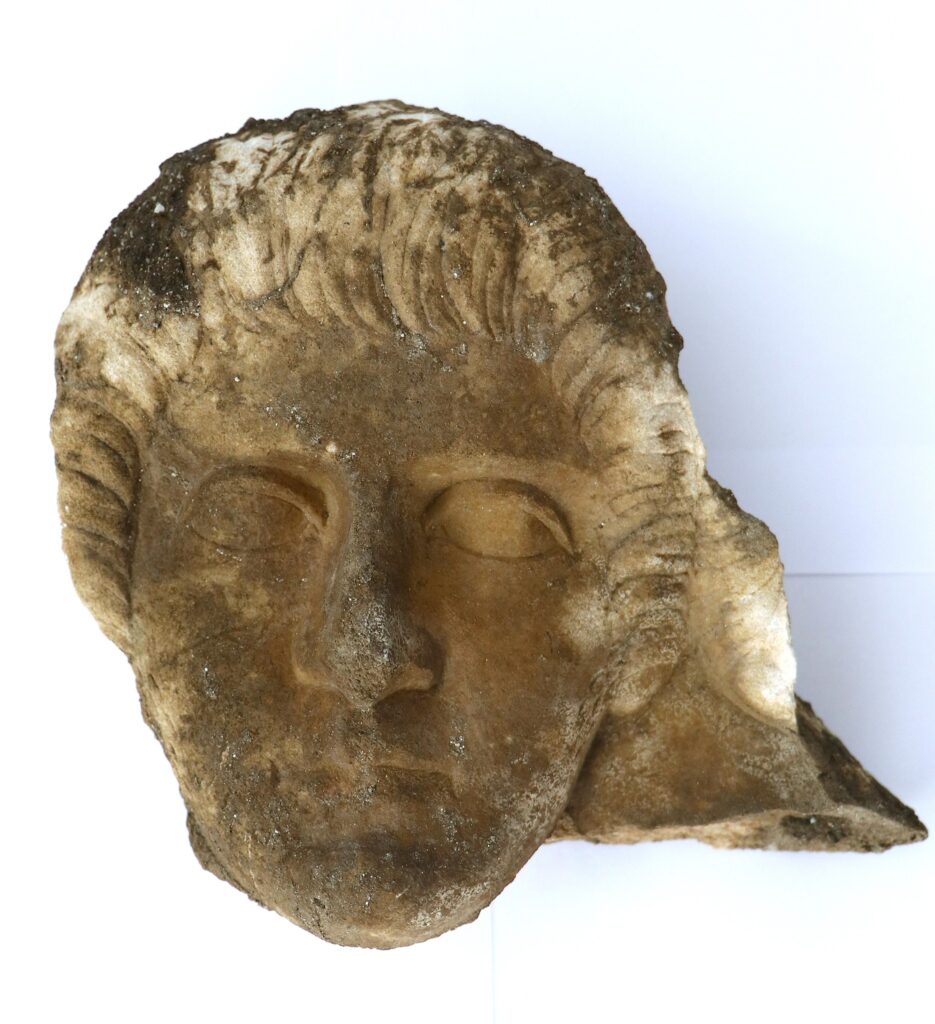
About Heraclea Sintica
Heraclea Sintica was a prominent Roman and earlier Hellenistic city located near modern-day Petrich, in southwestern Bulgaria, close to the Greek border. It was founded in the 4th century BC, likely by Philip II of Macedon or Alexander the Great, and flourished during Roman rule as a regional administrative center.
The city’s strategic location in the Struma River valley made it a key point of trade and cultural exchange between the Balkans and the Mediterranean. Today, Heraclea Sintica is one of Bulgaria’s most active archaeological sites, drawing international interest for its well-preserved structures, inscriptions, and artifacts.
Why These Discoveries Matter
The finds at Heraclea Sintica not only expand our understanding of funerary practices across different historical eras but also illustrate the rich cultural interplay of Thracian, Hellenistic, Celtic, and Roman influences in the region.
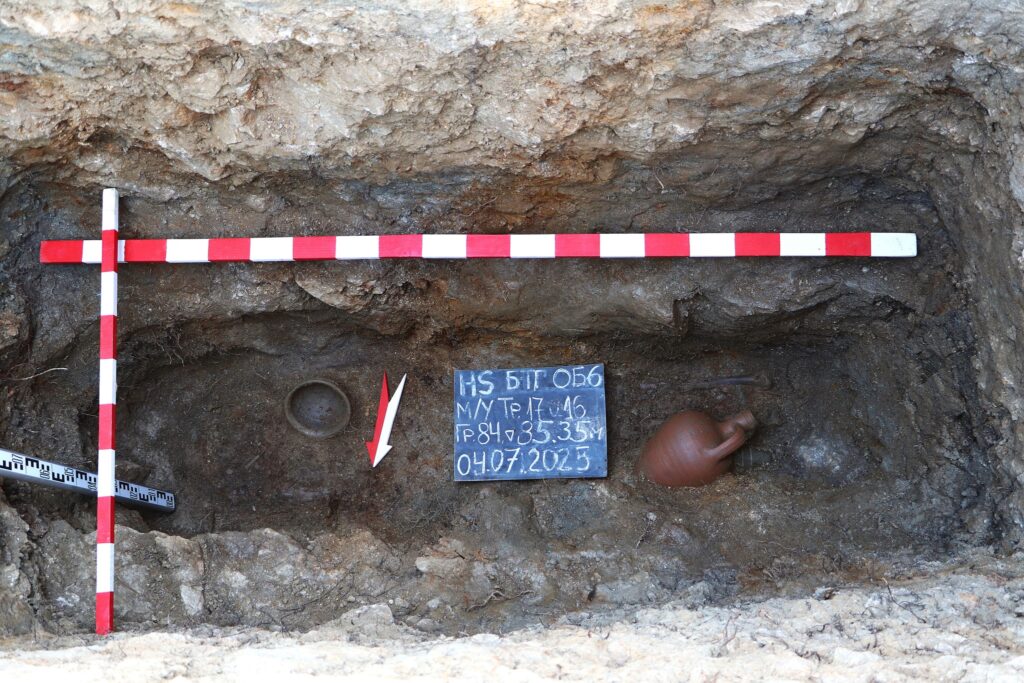
From the personal artistry of a marble funerary relief to ritualistic grave goods untouched for over two millennia, each discovery provides another piece in the puzzle of this once-thriving ancient city.
As excavations continue, archaeologists and history enthusiasts alike are urged to follow updates from the site, where history is quite literally being unearthed, layer by layer.
Cover Image Credit: Archaeologia Bulgarica

